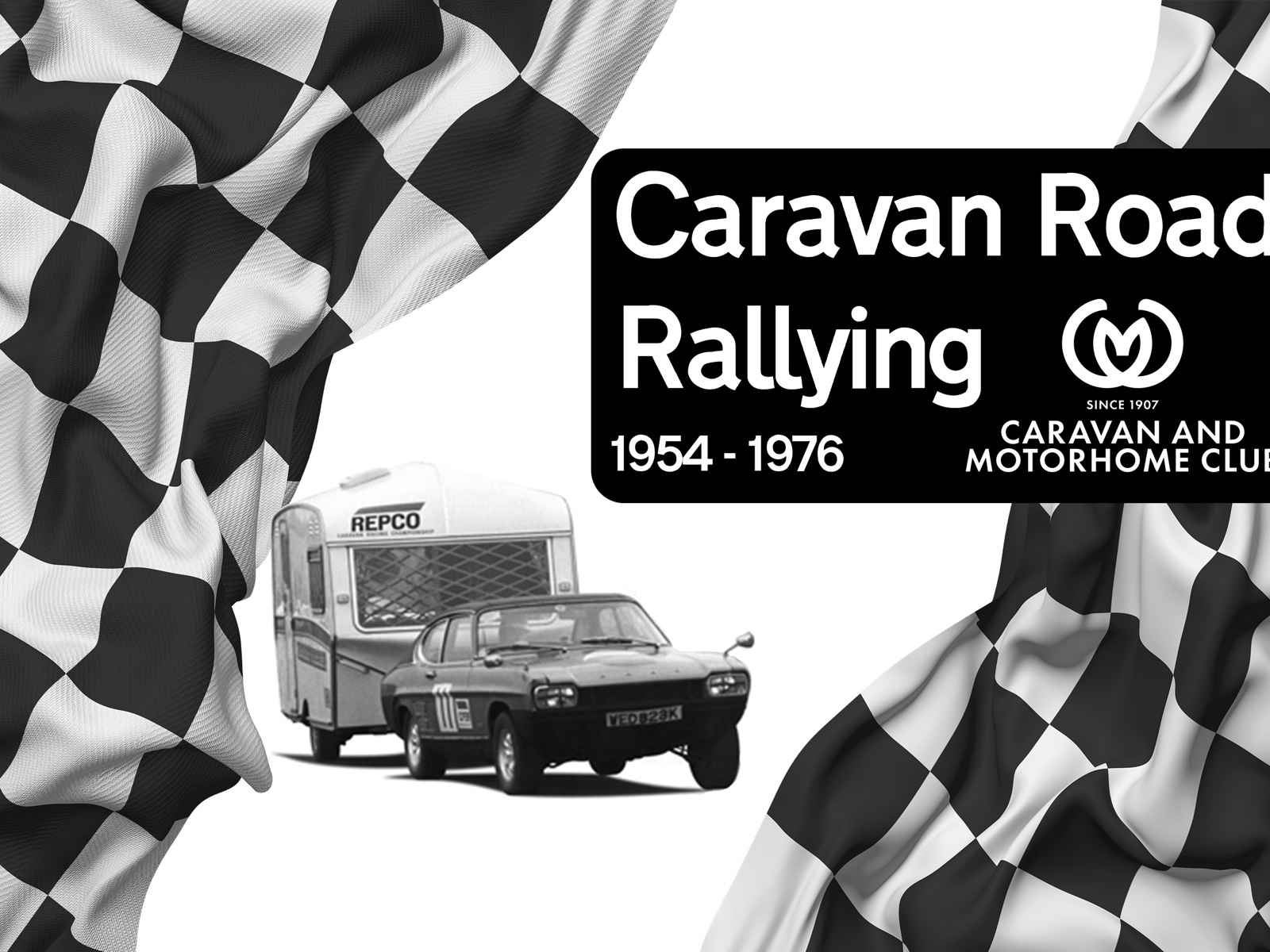
The Competition
Discover the stages of this unique competition, the prizes at stake and those who competed to great success.
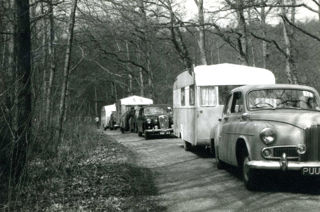
Rush to take part in Gruelling test
Taking place on public roads, the road section of the rally tested navigation and timekeeping during both the day and night.
In 1954, when the majority of competitors were Caravan Club members, the starting points were spread across the UK to reduce travel before the start. They then navigated towards a central point and covered around 250 miles (402 kilometres) over the course of the weekend. By the mid 1960s the route was standardised and all competitors set off from the same point. By 1976 the route had risen to ‘no more than 500’ miles (804 kilometres).
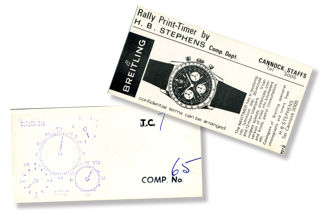
Navigation skill scores
Penalty points were given to competitors who were either too early or too late at time controls placed en–route.
The controls were manned by the huge team of volunteer marshals recruited for the events. Times taken to complete sections of the route were recorded for each competitor.
Due to the length of the road section routes, the cost of fuel could make competing expensive. At some events petrol companies, keen to show support, supplied fuel free of charge. However, like other forms of motor sport, the event could also be a victim to petrol shortages. As a result it was cancelled in the years 1957 and 1974.
Take a trip
Take a trip on the road section of the 1968 Caravan Club British Caravan Road Rally:
See more footage of the events on our Youtube Channel
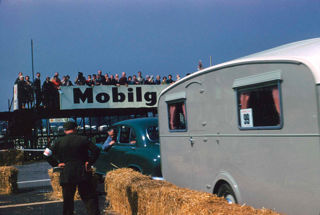
The brightest show
Experienced caravanners often excelled at the track test section of the Caravan Road Rallies due to their knowledge of manoeuvring vans.
During this section competitors displayed their ability to accurately park, reverse, accelerate, uncouple, climb a hill, brake and weave through bollards. Even their competence to evade potholes while towing was tested at some events.
Surprise tests were also thrown into the mix to show that the outfit was fully equipped for the road. Over the years these surprises ranged from having to change a wheel to making a cup of tea.
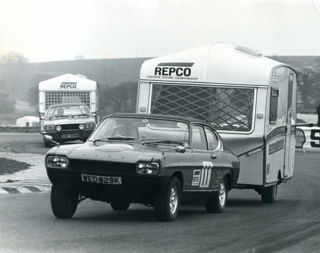
Ben Hur Circus
Staged at racing circuits including Silverstone, Aintree, Goodwood and Mallory Park, the speed for a single lap of the course was also tested.
In 1973 this was taken to a new level where caravan races, which were likened to Roman chariot racing, brought spectators to ‘their feet cheering’. This was, however, a slightly perilous event causing damage to several outfits in their quest for the award. The Caravan Club issued reminders in the event programmes that ‘motor sport is dangerous’.
In 1976 the track tests were made into an event separate from the Road Rally to encourage Caravan Club members without road rallying skills to display their manoeuvring.
Burning rubber
Competitors burn rubber during the braking test at Mallory Park in 1966. These tests demonstrated how car and caravan outfits could brake safely at high speed:
See more footage of the events on our Youtube Channel
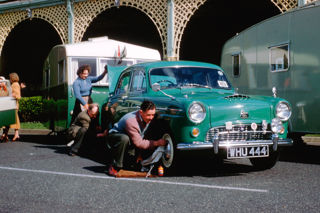
High standard achieved in Concurs
Sundays at the Caravan Road Rally were dedicated to the Concours d’Elegance.
After two days of gruelling tests on track and road, competitors began sprucing up their car and caravan outfits to be judged on their appearance. In the early days of the events, even elaborate table decorations were put inside the vans to impress the judges.
The vans lined up at venues which, over the years, included Madeira Drive on Brighton seafront and Southport Promenade.
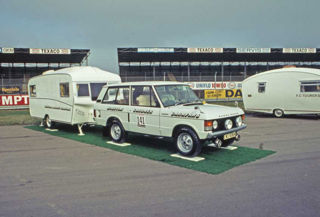
Encouraging design for good appearance
To make the competition equal, there were prizes for different classes of caravan.
The classes were split according to how much the caravan had cost. This meant that the most expensive vans with higher quality features would not be judged against the cheaper vans. The Brighton Trophy was awarded to the car and caravan outfit which was deemed to be the overall winner from across the classes.
This section of the event was created to encourage good visual design and workmanship among the manufacturers, along with pride of ownership and careful maintenance from the competitor.
Repairing the damage
If a competitor had scraped his car or caravan before the Concours he had to undertake repair work to stand a chance of winning. Watch the footage below to see a young spectator assessing the damage at Mallory Park in 1968:
See more footage of the events on our Youtube Channel
Ace Towers compete for Caravan Trophy
In the early days of the Road Rally competition, there were very few awards. However, as the competition grew, so did the number of prizes available. Here are some of the awards which were given to competitors of the events.
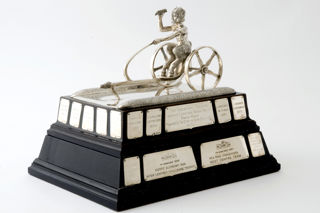
The Caravan Trophy
This striking trophy features the Greek god of the countryside, Pan, and was the top prize at The Caravan Club British Caravan Road Rally events. Awarded from the very first competition in 1954, the trophy was presented by The Caravan magazine to the competitor with the highest overall score.
Made in 1953 by London-based silversmiths Edward Barnard & Sons Ltd., the trophy originally had only one wooden tier to the base and has been added to over the years.
National Caravan Council Cup
This silver bowl was first awarded at the second Road Rally event in 1955. It was presented by the National Caravan Council to the best amateur or trade finisher which was not the overall trophy winner.
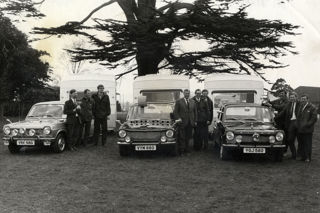
Esso Challenge Cup
First presented by the Esso Petroleum Company at the 1956 Road Rally competition, this trophy was awarded to the best team of three competitors.
The entrants were required to compete with caravans or cars of the same make, or they had to belong to a private or caravan trade organisation approved by the organisers.
The George Hollingbery Memorial Trophy
From 1960 this trophy was presented by Mrs Hollingbery in memorial of her late husband George, Chairman of the Club from 1951 to 1957. This prize was given to the competitor who had received the least number of penalty points, but who had not won either The Caravan Trophy or the National Caravan Council Cup.
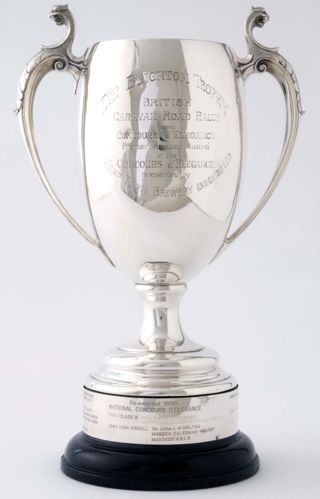
The Brighton Trophy
This award was presented annually to the overall winner of the Concours d’Elegance section of the Road Rally event. It was first awarded by the Brighton Corporation in 1958, but it is not known how the trophy was used for the nine years after its production in Birmingham in 1949.
Caravans International Trophy
First presented in 1973, this award was sponsored by the UK’s biggest caravan manufacturer at the time, Caravans International. This trophy was awarded annually to the best performance by a foreign entry.
Novice Award
The Novice Award was given to the competitor who incurred the fewest penalty points of those competing for the first time, yet had not been successful in winning any of the previously mentioned trophies.
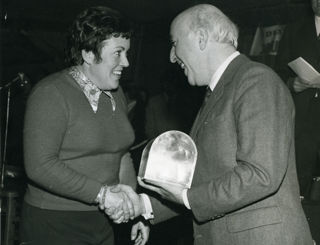
Electrolux Ladies’ Trophy
The Ladies’ prize was introduced in 1956 and awarded to the all-woman crew with the highest total marks. The award was eventually sponsored by Electrolux and the name of the prize changed to the Electrolux Ladies’ Trophy.
The National Benzole Caravan Proficiency Trophy
First presented by the National Benzole Company in 1965 when it was won by Mr E.W. Barrett, this trophy was awarded to the competitor with the best overall performance in the Test section of the Road Rally event.
Chidson Trophy
Donald Chidson, Secretary of The Caravan Club, first awarded this trophy in 1961 to the Club Centre with the highest total marks. Caravan Club Centres are groups of Club members from local areas who organise their own social gatherings and rallies.
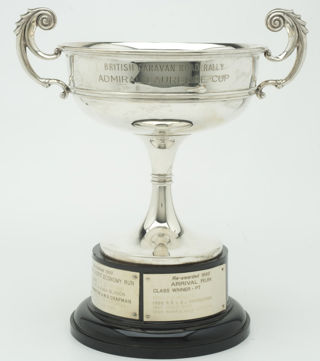
The Admiral Laurence Cup
Introduced in 1963, this trophy was awarded to the family entrant with the highest number of marks in the Rally. The co-driver could be the husband, wife, son, daughter, brother, sister, parent, grandparent or grandchild of the driver.
The cup was presented in the memory of Admiral Sir Noel Laurence who had served as Caravan Club Chairman from 1946 to 1951.
Hennessy Design Award
In 1962 this award was first presented by Mr Jim Hennessy. The award championed innovation and was given to the best prototype or specially designed caravan which had been entered by a trade manufacturer.

Subscribe for updates
Get our latest news and events straight to your inbox.